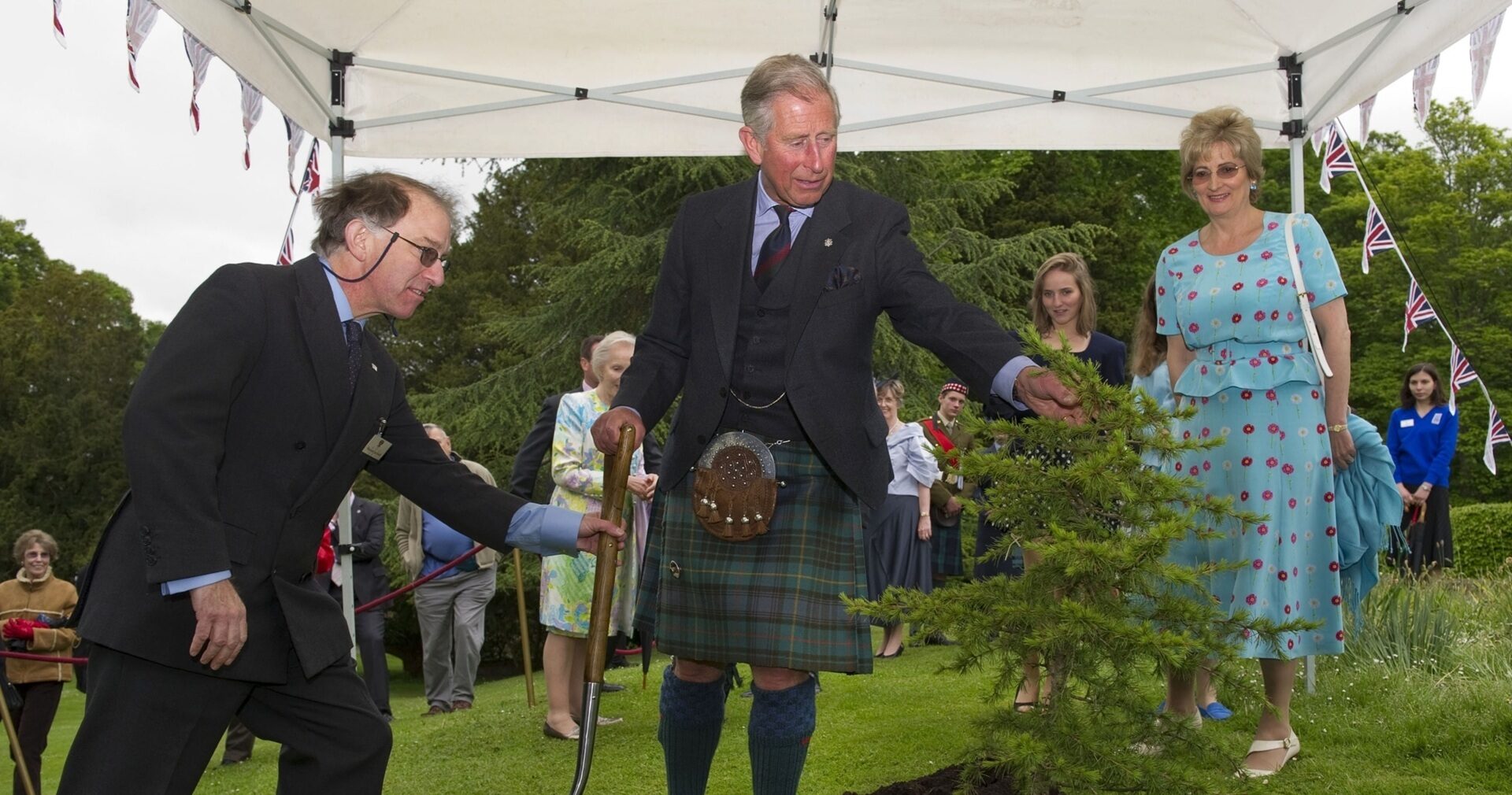Scone Palace is not only a historic residence but also the site of the celebrated Royal Trees. These ancient trees, steeped in legend and lore, stand as silent witnesses to centuries of Scottish history and royal tradition.
The Royal Trees at Scone Palace hold a special place in the hearts of Scots, symbolizing the enduring bond between the monarchy and the land. The area surrounding Scone Palace was once the site of the ancient coronation stone, The Stone of Destiny, upon which Scottish kings were traditionally crowned. It is said that the sacredness of this site extends to the majestic trees that adorn its landscape.
One of the iconic tree at Scone Palace is the Coronation Cedar, a towering cedar of Lebanon that commands attention with its sweeping branches and graceful form. Planted to commemorate the coronation of Queen Victoria in 1838, this majestic tree serves as a living monument to the enduring legacy of the British monarchy.
The King James VI Sycamore overlooking The Parkland, is believed to have been planted in the early 17th century, during the reign of King James VI of Scotland, who later became King James I of England. As one of the most influential monarchs in Scottish history, King James VI played a pivotal role in uniting the crowns of Scotland and England, ushering in a new era of political and cultural significance.
The sycamore tree, with its sprawling branches and lush foliage, serves as a living symbol of King James VI's reign and the prosperity of Scotland during his time. Its towering presence commands attention, casting a majestic silhouette against the backdrop of Scone Palace's historic grounds.
Throughout the centuries, the King James VI Sycamore has borne witness to countless royal ceremonies, celebrations, and gatherings. Its sturdy trunk and verdant canopy have provided shade and shelter to generations of visitors, offering a peaceful respite amid the splendour of the palace gardens.
The significance of the King James VI Sycamore extends beyond its historical roots. For many, it serves as a tangible link to Scotland's rich heritage and royal traditions, evoking a sense of pride and reverence for the nation's storied past.
The Royal Trees at Scone Palace are not merely objects of beauty but also repositories of cultural heritage and historical significance. Each tree has its own story to tell, a testament to the rich tapestry of Scottish history and royal tradition.
For centuries, Scone Palace has been a focal point of royal ceremonies and pageantry. It was here that Scottish kings were crowned upon the legendary Stone of Destiny, imbuing the land with an aura of sacredness and reverence. The surrounding trees, with their ancient roots and towering canopies, bear witness to this storied past, their silent presence lending a sense of continuity to the passage of time.
Beyond their historical significance, the Royal Trees at Scone Palace play a vital role in the preservation of biodiversity and natural heritage. The grounds surrounding the palace are home to a diverse array of flora and fauna, providing sanctuary for wildlife and serving as a haven for conservation efforts.
The Royal Trees at Scone Palace stand as living monuments to Scotland's royal heritage, their majestic presence a testament to the enduring bond between the monarchy and the land. As custodians of this remarkable legacy, the owners and caretakers of Scone Palace are committed to preserving and protecting these ancient trees for future generations to enjoy.
In conclusion, the Royal Trees at Scone Palace embody the spirit of Scotland's royal heritage, their towering forms a symbol of strength, resilience, and enduring tradition. As guardians of this sacred legacy, Scone Palace stands as a beacon of history and culture, inviting visitors to experience the magic and majesty of Scotland's royal past.
